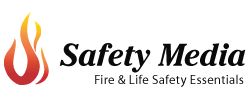Building a Barrier-Free Future Accessible Signage for Inclusive Spaces
Posted by Safety Media Inc on 2025 Jul 17th
Canada’s goal of becoming a barrier-free country is more than just a vision — it’s actively reshaping how we design and build today. With both Federal and Provincial legislation requiring accessibility in most buildings, inclusive spaces are no longer optional — they’re becoming the standard.
Why Accessibility Should Be Built In From the Start?
When it comes to signage, incorporating accessibility from the outset is the most logical and cost-effective approach. Integrating accessible signage during the planning or renovation phase ensures full compliance with evolving regulations, avoids costly retrofits later on, and reflects your organization’s commitment to inclusion.
What Makes a Sign “Accessible”?
According to the Accessible Canada Act and related standards such as CSA B651, accessible signage must meet specific criteria to be considered accessible. These requirements are designed to ensure that everyone can navigate spaces safely and independently. Core accessibility features include:
- Tactile Characters: Raised letters (minimum 1 mm) in a sans serif typeface for better legibility by touch.
- Unified English Braille (UEB): Braille placed directly below the corresponding text to aid blind and low-vision users.
- High Visual Contrast: Clear contrast between text and background to enhance readability in various lighting conditions.
- Non-Glare Finish: Matte or low-reflection surfaces improve visibility for all users.
These standards apply in many federally regulated and public-facing environments — from building entrances and elevators to washrooms and stairwells — supporting independent and safe navigation.
How and Where Accessible Signs Should Be Installed?
Designing compliant signage is only half the solution. Proper installation is essential to ensure that signs can be found, read, and used effectively. The following five principles are key to accessible placement:
- Position signs on the wall beside the latch side of the door. This makes them easy to find by touch.
- Mount signage at the correct height. Between 1400 mm and 1600 mm from the finished floor.
- Allow for clear space. Provide at least 600 mm x 600 mm of unobstructed access area.
- Keep placement consistent. Uniform height and positioning throughout the building help users navigate confidently.
- Avoid blocked or hidden locations. Ensure signs remain visible and accessible at all times.
Correct installation is not only a requirement — it’s what makes accessible signage effective in practice.
Let Safety Media Help You Get It Right
Knowing the rules is one thing. Applying them correctly across a facility is another — and that’s where Safety Media comes in.
We help organizations make future-ready decisions by providing accessibility-compliant signage that reflects the inclusive values Canada stands for. As a Canadian manufacturer, we offer everything from accessible parking signs to interior tactile and Braille signage, all designed to meet national accessibility standards.
But we don’t stop at design — we install signage too. Our experienced team ensures that every sign is placed correctly, functions as intended, and complies fully with Canadian regulations. The result is signage that not only meets legal requirements but also contributes to safer, more inclusive environments for everyone.
 CAD
CAD
 USD
USD

